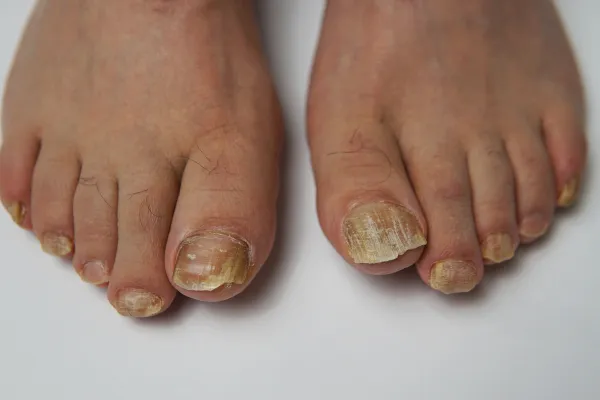
Are Your Toenails Thick and Yellow? It Might Be Nail Fungus
Most people don’t think much about their toenails—until something starts to look off. If you’ve noticed your nails becoming thicker, turning yellow or brown, or even starting to crumble at the edges, it could be more than just cosmetic. You might be dealing with a common condition known as nail fungus.
Let’s explore what nail fungus is, why it happens, and how you can treat it effectively.
What Is Nail Fungus?
Nail fungus, or onychomycosis, is a fungal infection that affects the toenails (and sometimes fingernails). It usually starts as a small white or yellow spot under the tip of the nail and can gradually spread deeper, causing the nail to thicken, discolour, and become brittle.
Fungal nail infections are quite common, especially among older adults. They can be stubborn to treat and often return if not managed properly.
What Causes Nail Fungus?
Fungi thrive in warm, moist environments—think sweaty socks, locker rooms, swimming pools, and communal showers. If your feet are regularly exposed to these conditions, you might be more susceptible.
Other risk factors include:
Wearing tight or non-breathable shoes
Poor foot hygiene
A history of athlete's foot
Reduced circulation (common in older adults)
Weakened immune system
It’s also more common in people with diabetes or other conditions that affect circulation or immune health.
How Do You Know If It’s Nail Fungus?
Fungal toenails often look and feel different from healthy ones. Here are some common signs:
Yellow, brown, or white discoloration
Thickened or distorted nail shape
Brittle, crumbly, or ragged edges
A foul odour from the nail
Nail separating from the nail bed
Sometimes the infection can be painless, but in other cases, it may cause discomfort, especially when wearing shoes.
Why You Shouldn’t Ignore It
It might be tempting to cover up thick, yellow nails with polish or keep them hidden in shoes, but ignoring nail fungus won’t make it go away. In fact, the infection can worsen over time and may even spread to other nails or your skin.
In more serious cases, untreated fungal infections can cause permanent nail damage or lead to bacterial infections, especially for those with diabetes.
Effective Nail Fungus Treatment in Dublin
If you suspect a fungal nail infection, it’s best to see a podiatrist. At our Foot Clinic Dublin 9, we can assess your nails and recommend the most suitable treatment based on the severity of the infection.
Treatment options may include:
Topical antifungal treatments: Applied directly to the nail. Works best in early or mild cases.
Oral antifungal medication: Prescribed for more advanced or stubborn infections.
Nail debridement: Trimming and thinning the nail to reduce pressure and help treatments penetrate more effectively.
Advice on hygiene and prevention: To stop the infection from coming back.
We understand how frustrating nail fungus can be, both physically and emotionally. Many people feel embarrassed by the appearance of their toenails. But with the right treatment plan and some patience, clear and healthy nails are possible again.
Tips to Prevent Nail Fungus
Once you've had a fungal infection, it’s important to reduce your risk of it returning. Here are some prevention tips:
Keep your feet clean and dry
Change socks daily, especially after sweating
Use antifungal foot powder if prone to sweating
Wear breathable shoes and alternate pairs
Avoid walking barefoot in communal showers or pool areas
Don’t share nail clippers or footwear
When to See a Podiatrist
If you notice any changes in your toenails that don't improve, it's time to get them checked. Nail fungus doesn’t clear up on its own, and early treatment can save you from months of discomfort and more aggressive care.
Our team at Mary Moore Podiatry offers compassionate and professional care, right here in Dublin 9. Whether it's mild discoloration or a persistent fungal infection, we’re here to help your feet look and feel their best.




